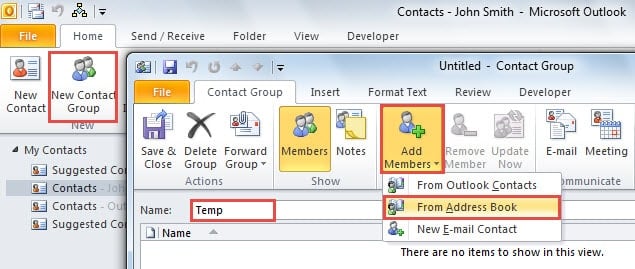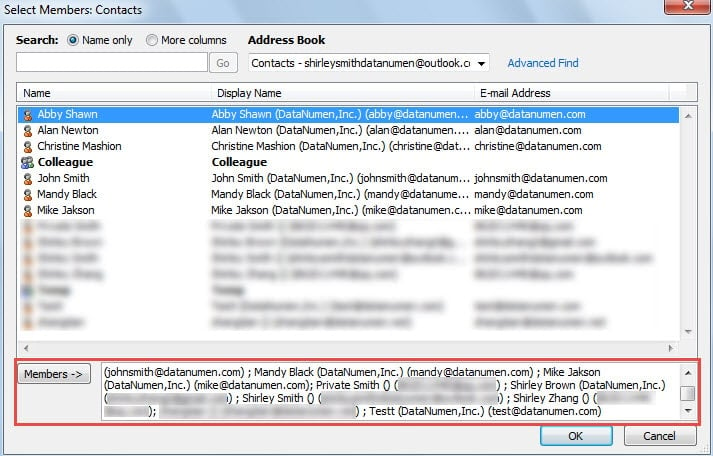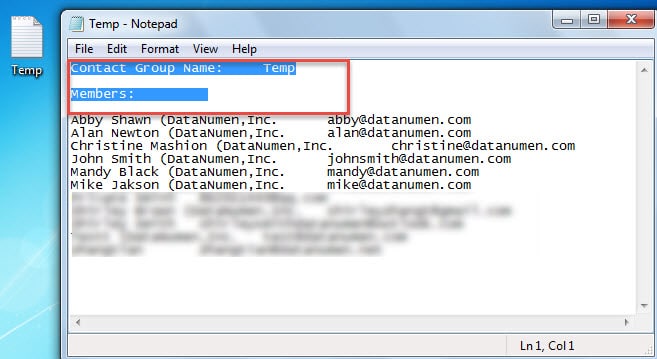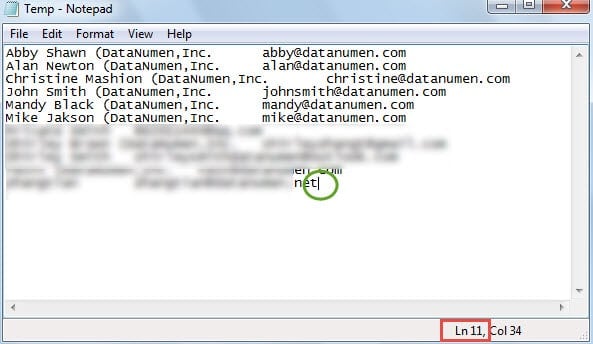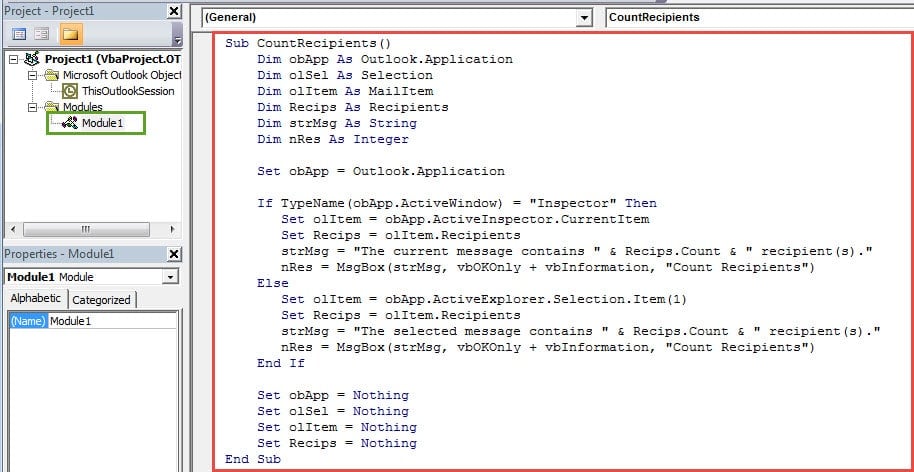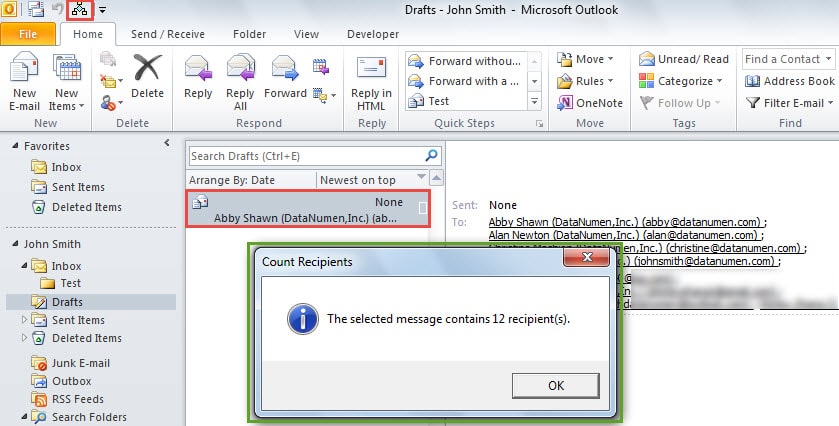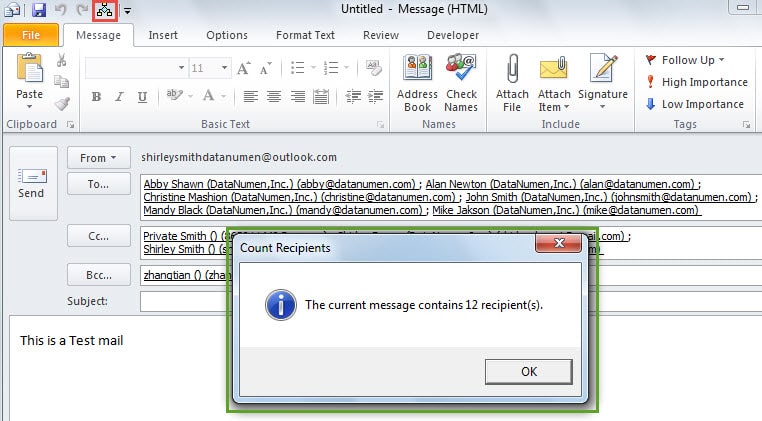At times, you may want to calculate the total number of the recipients in a specific email. But Outlook has no obvious “counting” function to support it. So this article will introduce 2 approaches to achieve it.
In some situations, for instance, when you’ve added a great amount of recipients to an email and find it difficult to manage them, you would like to obtain the total number of these recipients. But Outlook doesn’t have a native or default support to count. Thus you have to make some extra efforts to achieve it. Here we will tell you 2 methods.
Method 1: Count the Number of Recipients via Contact Group
- To start with, you should select all the recipients in “To”, “CC” and “BCC” fields and copy them to the blank space in message body.
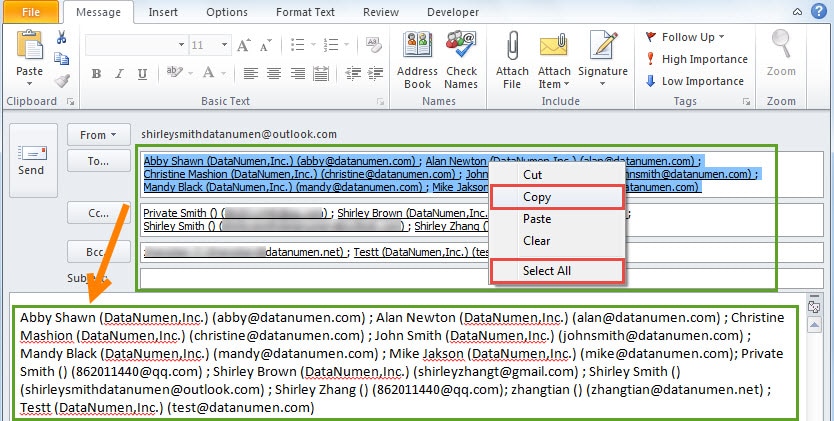
- Then select all the recipients in the body and copy them as well.
- Next go to Outlook Contacts pane and hit “New Contact Group”. In the popup window, set the name as “Temp” and then click “Add Members” and select “From Address Book” from the drop down list.
- Subsequently, paste the previously copied recipients in the “Member ->” field, like the following screenshot:
- After that, click “OK” button and back to the Contact Group. All the duplicates will be removed automatically. Now save it to local disk as “Text” file.
- Later open the Text file and remove the useless header, like the image below:
- Finally you can place the cursor at the last line. You will see the total number of the lines in the status bar. That is the total number of the recipients.
Method 2: Count the Number of Recipients with Outlook VBA
- At first, press “Alt + F11” key buttons to access “Visual Basic” window.
- Then copy and paste the following VBA codes into a new module.
Sub CountRecipients()
Dim obApp As Outlook.Application
Dim olSel As Selection
Dim olItem As MailItem
Dim Recips As Recipients
Dim strMsg As String
Dim nRes As Integer
Set obApp = Outlook.Application
If TypeName(obApp.ActiveWindow) = "Inspector" Then
Set olItem = obApp.ActiveInspector.CurrentItem
Set Recips = olItem.Recipients
strMsg = "The current message contains " & Recips.Count & " recipient(s)."
nRes = MsgBox(strMsg, vbOKOnly + vbInformation, "Count Recipients")
Else
Set olItem = obApp.ActiveExplorer.Selection.Item(1)
Set Recips = olItem.Recipients
strMsg = "The selected message contains " & Recips.Count & " recipient(s)."
nRes = MsgBox(strMsg, vbOKOnly + vbInformation, "Count Recipients")
End If
Set obApp = Nothing
Set olSel = Nothing
Set olItem = Nothing
Set Recips = Nothing
End Sub
- After that, you can exit the “Visual Basic” window and add the new macro to Quick Access Toolbar of the main Outlook window and the message window.
- Eventually you can have a try:
- When you select an email and hit the button in Quick Access Toolbar, you will receive a message like the following picture:
- When you open an email and click the button, you will get an dialog box, shown as the image below:
Note: This method will treat a contact group as one recipient and will not bypass the duplicate recipients.
Combat against Dangerous Macros
As we all know, email borne viruses have been one of the most common threats to data. So it is vitally important to configure Outlook only to enable the digitally signed macros, which can block viruses and malware. Plus, you had better keep a robust corrupted Outlook file repair utility, such as DataNumen Outlook Repair. It will come in handy when your Outlook suffers virus infection or malware attack.
Author Introduction:
Shirley Zhang is a data recovery expert in DataNumen, Inc., which is the world leader in data recovery technologies, including repair SQL mdf data error and outlook repair software products. For more information visit www.datanumen.com
